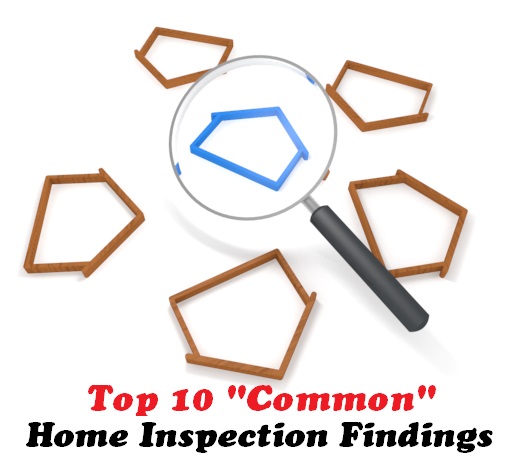Home Inspections are SO important during the home buying process. There are so many potential problems any homebuyer can avoid by simply doing a walk-through along with your home inspector to learn about a home's strengths and possible downfalls. Professionals know things like how soon you might have to replace the water heater, or if a deck is structurally sound. For most people, it's easy to spot eyesores and tell they need to be fixed, but do you know what the electrical wiring is supposed to look like in the attic? Probably not. It's important to hire a well-trusted and recommended professional to do your home inspection. Look for some form of certification or licensure (the state of Virginia does not require a home inspector to be certified...yet!) which is a good sign of a high quality professional.
Top 10 Home Inspection Repairs
By D. Macklin, Allied Home Inspection School
Throughout your home inspection career, you’ll come across a variety of home inspection repairs ranging from minor to frightening. Here’s a compilation of repairs you’re most likely to become intimately acquainted with:
1. Defective Wiring
From older homes with outdated wiring to remodeled homes with insufficient wiring, poor electrical systems are potentially hazardous Today, it’s not unusual to find homes with several computers and other high-tech electronics vying for electricity, so pay special attention to even the slightest wiring problems.
2. Faulty Drainage
Poor drainage is one of the most common problems found by home inspectors. If water is draining toward the home instead of away, your clients will need to remedy the situation right away.
3. Subtle Structural Damage
Subtle structural damage means a home is intact and livable, but has a problem that could potentially become worse. For example, if the home is plagued by poor drainage, the foundation may fall victim to water seepage.
4. Plumbing Challenges
Just like outdated wiring is a problem in older homes, so are old plumbing pipes. If the pipes aren’t copper, current or future problems are likely. Another common problem is the use of incompatible piping materials.
5. Poor Ventilation
Inadequate ventilation can lead to unwanted moisture that attacks interior walls and other vulnerable structures. This is especially true in rooms with no windows, like interior bathrooms. If untreated, the home may become mold ridden and intensify allergies.
6. Leaky Roof
Old or damaged shingles can cause water damage. Make sure to note on the home inspection report whether it’s an isolated problem, or if the entire roof should be replaced.
7. Old Heating Systems
Old heating systems can pose potential health and safety hazards. Older or improperly maintained heating systems may emit harmful amounts of carbon monoxide.
8. Environmental Hazards
Common hazards include asbestos, lead-based paints, radon, formaldehyde and contaminated drinking water. Harmful hazards are immediate red flags and a client should be advised of the situation immediately.
9. Home Negligence
Some repairs are small, but worth reporting, like peeling paint and broken hardware. Although these repairs aren’t as serious as those posing health risks, they still fall under a home inspector’s scope of work.
10. Unwanted Water and Air
Excessive water or air inside the home may be caused by poor caulking or weather stripping. This is a typically simple repair that will save your clients from potential water damage and help lower heating and cooling costs.
You can find the original article on National Association of Certified Home Inspectors website, nachi.org


No comments:
Post a Comment